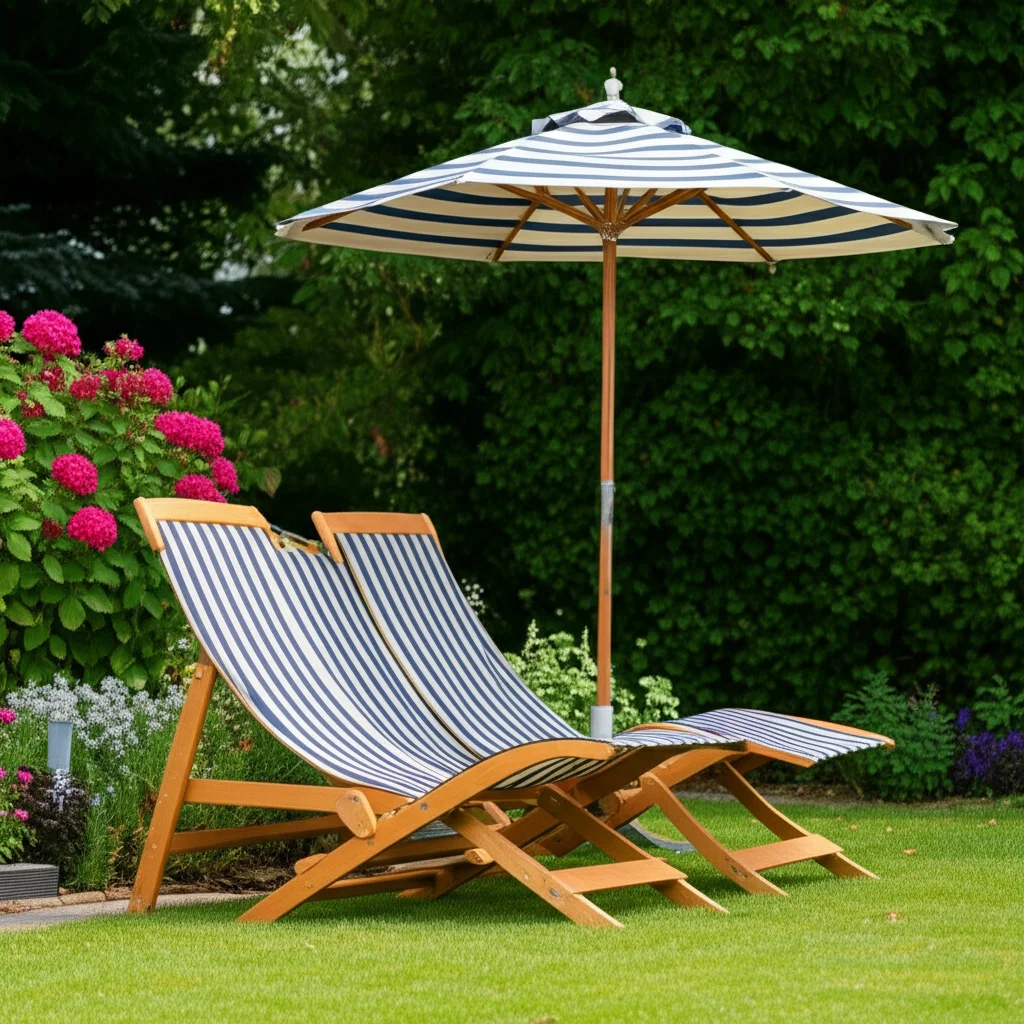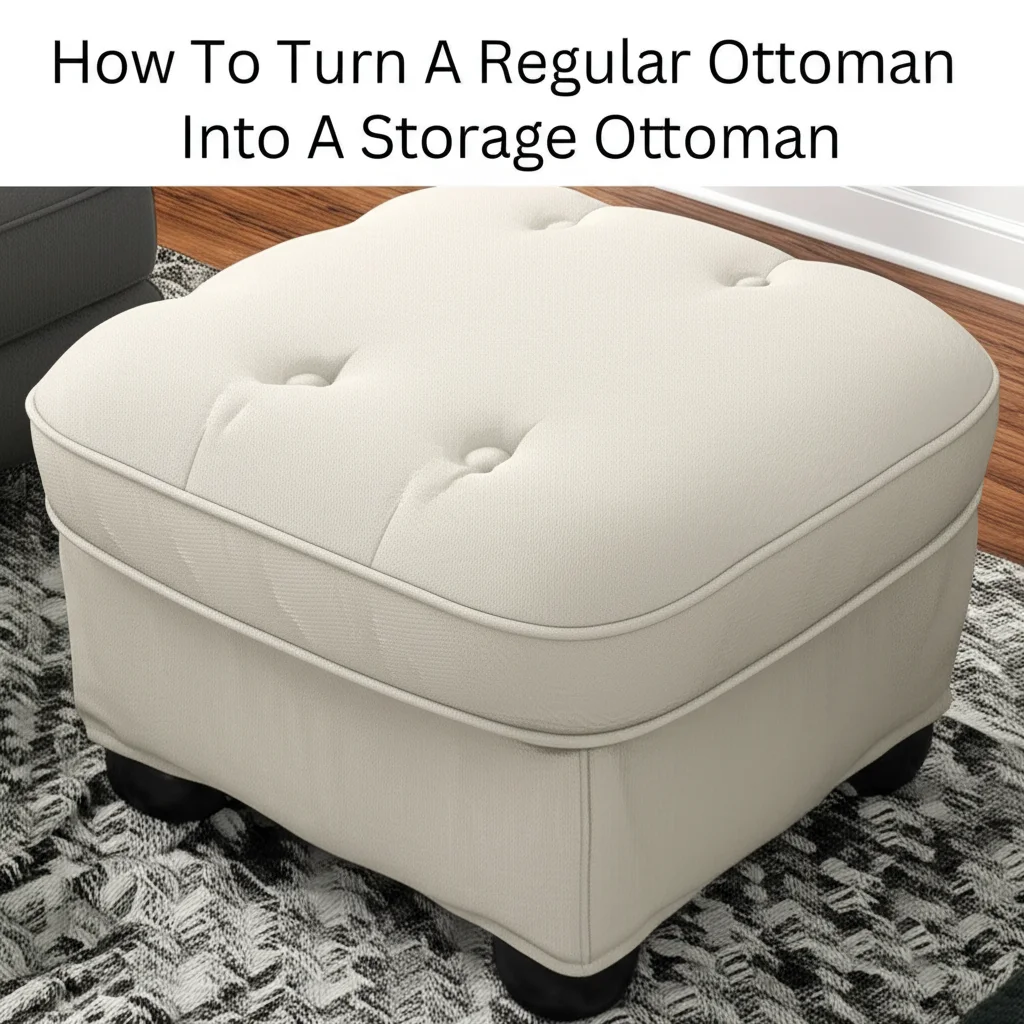· Todd Martin · Storage Solutions · 17 min read
How To Store Chairs

Mastering Chair Storage: Space-Saving & Protective Solutions
Do you have extra chairs cluttering your home? Perhaps you need to put away seasonal outdoor seating. Knowing how to store chairs correctly helps you save space. It also keeps your furniture looking good for a longer time. Proper chair storage prevents damage like dust, moisture, or pests.
This guide explores various ways to store chairs. We cover different chair types and ideal storage locations. You will learn important preparation steps for chairs before storage. I will also share clever space-saving techniques and how to protect chairs from damage.
Takeaway
- Clean and Inspect: Always clean chairs thoroughly before storing. Check for damage and make any needed repairs.
- Protect from Elements: Use covers or bags to shield chairs from dust, dirt, moisture, and pests.
- Optimize Space: Stack or fold chairs when possible. Use vertical storage solutions like wall hooks or racks.
- Choose Right Location: Select a cool, dry, and stable environment for storage. Consider garages, basements, or dedicated storage units.
- Consider Chair Type: Different chairs need different storage methods. Folding chairs save space, while upholstered chairs need air circulation.
To store chairs effectively, clean each chair well, protect it with appropriate covers, and choose a storage location free from extreme temperatures and humidity. Maximize your space by stacking or folding chairs. This method keeps them safe and organized.
Assessing Your Chairs and Storage Needs
Before you begin storing chairs, it helps to understand what kind of chairs you have. Different materials and designs need different approaches. Thinking about how long you plan to store them also guides your decisions. I always start by looking at each chair carefully.
Different Chair Types and Their Storage Demands
Chairs come in many forms, and each has unique storage needs. Dining chairs often take up a lot of floor space. Folding chairs are convenient because they collapse. Outdoor chairs are built to withstand elements, but still benefit from protection during off-season.
- Dining Chairs: These are usually sturdy and do not fold. You might have extra dining chairs for holidays or events. Storing them requires careful planning to prevent scratches. They often need soft padding between stacked units. If you have how to store extra dining chairs, consider using covers.
- Folding Chairs: These chairs are designed for easy storage. They fold flat, which saves a lot of room. I find folding chairs incredibly useful for temporary seating. Learning how to store folding chairs is often straightforward, but proper stacking or hanging is key.
- Outdoor Chairs: Patio chairs, Adirondack chairs, and lawn chairs face harsh weather. They need protection from sun, rain, and snow. Even if they are weatherproof, storing them indoors or under covers extends their life. This is especially true for the off-season.
- Accent and Upholstered Chairs: These chairs are often decorative and delicate. They need protection from dust and crushing. I always ensure these chairs have enough space around them. Covers prevent damage to the fabric or finish.
Short-Term vs. Long-Term Storage
The duration of storage affects your strategy. Short-term storage means you will use the chairs again soon. Long-term storage implies chairs will be put away for many months or even years. I treat long-term storage with more care.
- Short-Term Storage: For a few weeks or months, a simple cover and a corner of a room might be enough. You might stack chairs in a closet. The main goal here is quick access and preventing dust buildup.
- Long-Term Storage: This requires more preparation. You must clean chairs thoroughly and protect them from environmental factors. Humidity, temperature swings, and pests become bigger concerns. Proper wrapping and climate-controlled spaces are ideal for long-term protection. I invest more time and resources into long-term storage.
Ideal Locations for Chair Storage
Choosing the right location for storing chairs is crucial. The environment directly impacts the condition of your furniture. I always look for a place that offers protection from extreme conditions. Consider these common spots for effective chair storage.
Garage and Basement Storage
Garages and basements are popular choices for storing chairs. They offer ample space for larger items. However, these areas can have varying temperatures and humidity levels. My garage can get very cold in winter and hot in summer.
- Garages: Garages are good for durable chairs like plastic patio chairs or metal folding chairs. They are less ideal for delicate upholstered items. Ensure the area is clean and dry. Use elevated shelving or pallets to keep chairs off the concrete floor. This prevents moisture damage from the ground. Many people learn how to store folding chairs in garage effectively by using wall mounts.
- Basements: Basements can be cooler and more stable in temperature than garages. However, they are prone to humidity and potential flooding. Use a dehumidifier if your basement is damp. Store chairs on raised platforms or shelves. Proper air circulation is important to prevent mold or mildew growth on your stored items. For specific large items like how to store patio furniture in garage, consider wrapping them.
Closet and Under-Bed Solutions
For indoor chairs or small spaces, closets and under-bed areas offer good solutions. These spots are often within your living space. They typically have stable temperatures and low humidity. I use these for chairs I need access to more often.
- Closets: Hall closets or utility closets can house a few folding chairs or small accent chairs. Stack them neatly or hang them on hooks if the closet is tall enough. Over-the-door hangers can also create more space.
- Under-Bed Storage: For low-profile chairs or disassembled parts, under-bed storage containers work well. These containers protect items from dust. They also keep things out of sight. This is a smart way to use otherwise wasted space in your bedroom.
Outdoor Storage Options
Some chairs, especially those designed for outdoor use, can be stored outside. This is true if you lack indoor storage space. However, outdoor storage requires additional protective measures. I only store chairs outside as a last resort.
- Covered Patios or Sheds: A covered patio offers some protection from direct rain and sun. A garden shed provides better enclosure. Make sure the shed is secure and offers good ventilation.
- Using Protective Covers: For outdoor storage, high-quality, waterproof furniture covers are essential. These covers protect chairs from rain, snow, UV rays, and dirt. Even when storing how to store patio furniture outside in winter, covers are a must. Elevate chairs slightly to prevent water pooling around the base. This also improves air circulation and reduces dampness.
Preparing Chairs for Storage
Proper preparation is the most critical step before storing chairs. Skipping this can lead to damage, mold, or unpleasant odors. I always dedicate time to cleaning and protecting each chair. This ensures they emerge from storage in excellent condition.
Cleaning and Protecting Materials
Different chair materials require specific cleaning methods. Using the wrong cleaner can cause permanent damage. I make sure to identify the material first.
- Wood Chairs: Wipe wood chairs with a damp cloth to remove dust and dirt. Use a wood cleaner for tougher grime. Let the wood dry completely before storage to prevent warping or mold. Apply a wood polish or wax for extra protection. This helps keep the wood from drying out.
- Upholstered Chairs: Vacuum upholstered chairs thoroughly to remove crumbs and dust. For stains, use a fabric-specific cleaner. Blot the stain; do not rub. Ensure the fabric is completely dry before covering. Damp fabric can grow mold. Understanding how to clean upholstered chairs is vital for proper preparation.
- Metal Chairs: Clean metal chairs with a mild soap and water solution. Rinse them well and dry them immediately. This prevents rust. For added protection, you can apply a layer of car wax or a rust-inhibiting spray. If you have outdoor metal chairs, removing any existing rust spots before storage is a good idea. Cleaning how to clean metal chairs well extends their life.
- Plastic Chairs: Plastic chairs are generally easy to clean. Use soap and water, then rinse and dry. For stubborn stains, a baking soda paste can work. Make sure they are completely dry before stacking or covering. This prevents mildew.
- Leather Chairs: Wipe leather chairs with a soft, damp cloth. Use a specialized leather cleaner for deeper cleaning. Follow with a leather conditioner to keep the material supple. This prevents cracking and drying. Proper care is key when you want to know how to clean leather chairs effectively for long-term storage.
Disassembly and Covering Techniques
Disassembling chairs can save space and protect fragile parts. Covers provide an essential barrier against dust and moisture. I assess each chair for its ability to be disassembled.
- Disassembly: If chairs have removable legs or backs, take them apart. Store smaller pieces in clearly labeled bags. This makes reassembly easier. Disassembly reduces the chair’s footprint. It also protects delicate parts from breaking under pressure.
- Wrapping and Covering:
- Plastic Sheeting: Use heavy-duty plastic sheeting or furniture bags for dust and moisture protection. Ensure the plastic does not trap moisture inside. Leave some gaps for air circulation if storing in a humid environment.
- Moving Blankets/Quilts: These provide padding against scratches and dings. They are good for valuable or delicate chairs. Secure them with packing tape or stretch wrap.
- Fabric Covers: Breathable fabric covers are best for upholstered furniture. They allow air circulation while keeping dust off. Avoid plastic covers for long-term storage of upholstered items. Plastic can trap moisture and cause mold.
Space-Saving Chair Storage Solutions
Maximizing space is a top priority when storing chairs. Cluttered storage areas make it hard to find things. They also risk damaging your furniture. I always look for smart ways to optimize every inch of storage space available.
Vertical Storage Racks and Hooks
Vertical storage is a game-changer for chairs, especially folding ones. It utilizes wall space that would otherwise be wasted. I have found this method incredibly efficient.
- Wall-Mounted Racks: Heavy-duty racks can hold multiple folding chairs. These racks keep chairs off the floor. They free up valuable floor space in your garage or utility room. I often use these for large quantities of chairs.
- Utility Hooks: Individual utility hooks or large bicycle hooks can hold one or two folding chairs. Attach them securely to wall studs. This is a simple and inexpensive solution. It is perfect for storing a few chairs in a closet or shed. This strategy is similar to maximizing space for other items like how to store folding tables in garage.
Stacking and Nesting Chairs
Stacking is the most common method for saving space. Some chairs are designed to nest within each other. This is an efficient way to store them. However, you must stack them correctly to avoid damage.
- Proper Stacking:
- Identify Stackable Chairs: Not all chairs are stackable. Look for chairs with tapered legs or specific stacking features.
- Protect Surfaces: Place pads, blankets, or cardboard between chairs when stacking. This prevents scratches and scuffs. I use old towels or moving blankets for this purpose.
- Limit Height: Do not stack chairs too high. This can make the stack unstable and cause damage to the bottom chairs. A stack of 3-4 chairs is usually safe.
- Nesting Chairs: Some modern chair designs allow them to nest inside one another. This reduces their footprint significantly. This is common for dining chairs or lounge chairs designed for small spaces.
Using Storage Bags and Bins
Specialized storage solutions can protect chairs while keeping them tidy. Bags and bins offer an extra layer of protection. They also help organize your storage area.
- Chair Storage Bags: Clear, heavy-duty vinyl bags are available for folding chairs. They protect from dust and moisture. They also make it easy to see what is inside. These bags are perfect for storing chairs in a garage or basement.
- Large Storage Bins: For smaller, disassembled chair parts or cushions, large plastic bins with lids are ideal. They keep pests out and protect items from dirt. Label the bins clearly. This helps you find things easily later.
Special Considerations for Outdoor and Specialty Chairs
Certain chair types require specific attention when storing. Their materials, use, and design influence the best storage approach. I always adapt my methods based on the chair in question.
Outdoor Chairs (Patio, Adirondack, Lawn)
Outdoor chairs face more wear and tear than indoor furniture. Proper storage is key to extending their lifespan. I focus on protecting them from the elements during off-season.
- Patio Furniture: Clean all patio chairs thoroughly. Remove cushions and store them separately. These are prone to mildew. For metal frames, check for rust. For wicker or resin, ensure no cracks or damage. Store metal and plastic chairs in a dry, covered area. If storing outdoors, use durable, waterproof covers. You can learn how to store cushions for outdoor furniture properly to prevent damage.
- Adirondack Chairs: These sturdy, often wooden chairs are heavy. They do not usually fold. Cleaning and drying them thoroughly is essential. Apply a sealant or stain if needed. Store them in a shed, garage, or under a sturdy cover. If space is tight, consider disassembling them. Specific guidance for how to store adirondack chairs often highlights seasonal care.
- Lawn Chairs: Many old-fashioned lawn chairs have fabric webbing. Clean the webbing to remove dirt and mildew. Dry completely. Folding lawn chairs store easily. Store them in a dry place to prevent rusting of metal frames or degradation of fabric.
Camping and Beach Chairs
These chairs are designed for portability but still need care during storage. They often come into contact with dirt, sand, and moisture. I ensure they are spotless before packing them away.
- Camping Chairs: Shake out all dirt and debris. Wipe down the fabric and frame. Ensure the chair is completely dry. Mold can quickly grow on damp fabric. Fold them neatly and store them in their original bags. Keep them in a dry, well-ventilated area, like a garage or closet. For more tips, check out how to store camping chairs.
- Beach Chairs: Rinse beach chairs with fresh water to remove salt and sand. This prevents corrosion. Dry them completely in the sun. Store them folded in a dry place. Protect any fabric components from mildew.
Leather and Upholstered Chairs
These chairs are often more delicate and expensive. They require gentle care and stable storage conditions. I treat them with extra caution.
- Leather Chairs: After cleaning and conditioning, cover leather chairs with breathable cloth. Avoid plastic covers, which can trap moisture and cause mildew or cracking. Store leather in a climate-controlled area. This protects it from extreme temperature changes and humidity. This is crucial for how to store leather furniture.
- Upholstered Chairs: Vacuum thoroughly and spot-clean any stains. Use breathable fabric covers, such as old sheets or specialized furniture covers. Do not use plastic. Ensure good air circulation around the chairs. Avoid stacking heavy items on upholstered surfaces. This can crush the padding.
Protecting Chairs from Damage During Storage
Effective storage goes beyond just putting chairs away. It involves actively protecting them from environmental factors and potential threats. I focus on creating a safe environment for my furniture.
Humidity and Temperature Control
Fluctuations in humidity and temperature are major enemies of stored furniture. They can cause wood to warp, metal to rust, and fabrics to grow mold. I try to maintain stable conditions.
- Climate-Controlled Storage: For valuable or delicate chairs, a climate-controlled storage unit is ideal. These units keep temperature and humidity constant. This prevents damage.
- Dehumidifiers and Desiccants: In damp areas like basements or garages, use a dehumidifier. This reduces moisture in the air. Silica gel packets or other desiccants can be placed inside furniture covers or near chairs. These absorb localized moisture.
- Air Circulation: Ensure there is some airflow around your stored chairs. Do not pack them too tightly against walls or other items. Proper air circulation helps prevent moisture buildup and mold growth.
Pest and Dust Protection
Pests like rodents or insects can severely damage chairs. Dust can also accumulate and be difficult to remove later. I take steps to keep these threats at bay.
- Pest Control: Ensure your storage area is free of pests. Seal any cracks or openings in walls or floors. Use bait stations or traps if necessary. For long-term storage, placing cedar blocks or mothballs near upholstered items can deter insects.
- Dust Covers: Use furniture covers, old sheets, or plastic sheeting to cover chairs. This keeps dust from settling on them. A good cover also offers a barrier against incidental bumps or scratches.
- Clean Storage Area: Before placing chairs in storage, clean the area thoroughly. Sweep floors, wipe down shelves, and ensure there is no debris. A clean environment reduces the chances of attracting pests. When storing how to store a mattress in the garage, the same principles of cleanliness and pest control apply.
Proper Air Circulation
Air circulation is vital, especially for upholstered and wooden chairs. Stagnant air can lead to musty odors and mold growth. I arrange chairs to allow air to move freely around them.
- Elevate Chairs: Keep chairs off the floor, especially in basements or garages. Use pallets, wooden blocks, or storage shelves. This protects against ground moisture and allows air to flow underneath.
- Do Not Overpack: Avoid cramming too many chairs into a small space. Leave some room between items. This promotes airflow. If using plastic covers, ensure they are not completely sealed unless the environment is perfectly dry. For outdoor furniture, specifically how to store patio furniture, good airflow under covers is always recommended.
- Ventilation: If storing in a shed or non-climate-controlled room, open windows or doors periodically. This helps air out the space. This is especially true on dry, sunny days.
FAQ Section
Q1: Can I store upholstered chairs in a garage? A1: You can store upholstered chairs in a garage, but do so with caution. Garages often have fluctuating temperatures and high humidity, which can damage fabric and cause mold. Use a breathable fabric cover, elevate the chairs off the floor, and consider using a dehumidifier to control moisture. A climate-controlled environment is always better for upholstered items.
Q2: How do I prevent mold on chairs stored in the basement? A2: To prevent mold on chairs stored in the basement, ensure the area is dry. Use a dehumidifier to control humidity levels. Elevate chairs on pallets or shelving to keep them off the concrete floor. Leave some space between chairs for air circulation. Clean and thoroughly dry chairs before storage, and use breathable covers.
Q3: What’s the best way to store folding chairs for easy access? A3: The best way to store folding chairs for easy access is by using vertical storage. Install wall-mounted racks or heavy-duty utility hooks in a garage or utility closet. This keeps them off the floor and visible. You can also stack them neatly in a corner with a cover if you prefer floor storage.
Q4: Do I need to cover outdoor chairs for winter storage? A4: Yes, you should cover outdoor chairs for winter storage, even if they are weatherproof. High-quality, waterproof covers protect them from snow, ice, rain, and UV damage. This prevents fading, cracking, and rust. Covering extends the lifespan of your outdoor furniture significantly and keeps it cleaner.
Q5: How should I prepare wooden chairs before storing them long-term? A5: Prepare wooden chairs for long-term storage by cleaning them thoroughly to remove dust and dirt. Ensure they are completely dry to prevent mold. You can apply a wood conditioner or polish to prevent drying and cracking. Cover them with a breathable cloth or moving blanket to protect them from dust and scratches. Store them in a stable, dry environment.
Q6: Is it better to disassemble chairs for storage? A6: Disassembling chairs for storage is often better for space-saving and protection. It reduces the chair’s footprint, making it easier to store in compact areas. It also protects delicate parts like legs from accidental damage during movement or stacking. Always keep all hardware in a labeled bag attached to the chair.
Conclusion
Properly storing chairs is a simple step that yields great benefits. You save valuable space in your home and protect your furniture investment. From seasonal patio chairs to rarely used dining chairs, each type needs specific care. By following these guidelines, you ensure your chairs remain in excellent condition.
Remember to assess your chairs, choose the right location, and prepare them carefully. Implement space-saving techniques and protect them from environmental hazards. These practices will keep your chairs ready for use when you need them. Take the time to store chairs correctly; your future self will appreciate it. Keep your home organized and your furniture preserved for years to come.



